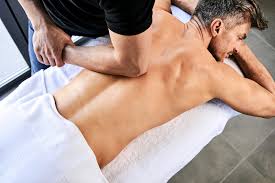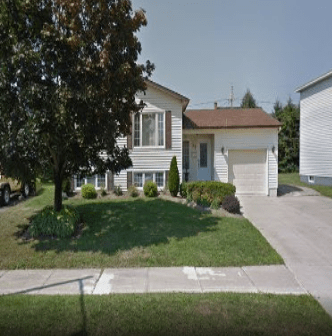What To Know About Pain, Pressure And Deep Tissue Massage Therapy
When performing my massages, I believe in the concept of “Less is More” instead of “No Pain, No Gain” – this concept should never be used in massage therapy.
** Communication between Client & Therapist is Very Important **
I determine how much pressure I’m using based on 2 approaches:
- Client says too much pressure – reduce pressure
- Client’s “Body” is saying too much pressure (muscles twitching, changes in breathing, facial expressions) – reduce pressure
I always listen to the client first, but if the client wants more pressure, but their Body is saying “No”, then I listen to their body.
Everyone has a different pain tolerance and every client is different, that is why every client’s treatment is customized to that client.
When massaging, you need to use lighter techniques to first warm up and loosen up the top layer of muscles and tissues before going deeper (Deep Tissue).

Deep Tissue Massage is not the same as just using lots of pressure. You do receive more pressure but the goal is getting to the deeper muscles and tissues.
Deep tissue can be done simply by adding more pressure with fingers, although it’s more common to use knuckles, forearms and elbows.
Other types of deep tissue techniques include: Trigger Point Therapy, Cupping and IASTM (Instrument Assisted Soft Tissue Mobilizations) – Rock Blading or Graston.
When getting a massage you should never receive pressure above a “6-7” on a scale of 1-10 on your pain tolerance.
When the brain sends out pain signals, it’s your brain’s way of telling you there’s a problem. If you don’t do something to stop what’s causing the pain, your body will go into defense mode – sending even more intense pain signals, tensing up and restricting access to deeper tissues. Requiring more and more pressure.
Eventually if left untreated, you’re body will adapt to you’re current issues decreasing the range of motion in the muscles / tissues in the affected area of the body, becoming stiff and affecting posture, increasing the amount of pain (eventually increasing your pain tolerance), producing painful knots that often refer pain to other parts of the body.
Occasionally when using too much pressure it can cause trauma to that area or injuries to other areas.
As a Registered Massage Therapist, I have learned you get much better results when you’re working with the “Body” instead of against it.
Also the more relaxed you are during the treatment the easier and faster you’ll see results. Proper breathing is a big part of this too as it helps get more oxygen into your muscles helping them to relax faster.
When getting a massage, it’s your treatment. You decide on how much pressure you want, what areas to be worked on, etc. It’s important you tell your massage therapist if it’s too much pressure or if something is uncomfortable so the therapist can modify your treatment so you can receive the best treatment possible.
Deep Tissue Massage Benefits
- Reduce Acute and Chronic Pain
- Break Up Scar Tissue and Adhesions
- Rehabilitate Injured Muscles
- Improves Posture and Range of Motion
- Helps Lower Blood Pressure
- Decrease Stress, Anxiety and Muscle Tension
- Become More Relaxed
Some side effects of deep tissue massage therapy that you may experience after treatment include feeling tired, muscle soreness or (DOMS) delayed onset muscle soreness and possible bruising.
Here are some common questions I’ve found people asking about deep tissue massage:
What is the difference between a Swedish Massage and a Deep Tissue Massage?
Swedish Massage is commonly used for a relaxing massage using long, gentle superficial strokes and movements to help you become more relaxed, increase circulation, decrease stress, reduce tension and improve flexibility.
Deep Tissue Massage begins with lighter techniques to loosen up the superficial tissues, then using more pressure, techniques and tools to access the deeper layers of muscles and tissues to help relieve chronic pain and tension, trigger points (knots) in the deeper muscles and help increase mobility.
Can a deep tissue massage help plantar fasciitis?
Many of my clients who had plantar fasciitis have received deep tissue massage using Rock Blades (IASTM) on their calf and foot allowing them to feel much better after the treatment. Usually followed by K-Taping at the end of the treatment.
How long should I wait before my next deep tissue massage?
As a general rule of thumb, you should wait 48-72 hours before your next deep tissue massage treatment to allow your body to recover.
Are deep tissue massages suppose to hurt?
Deep tissue massage does tend to add more pressure but you shouldn’t feel too much pressure, if it hurts or too painful – tell your massage therapist so they can work within your pain tolerance. It’s normal to feel some discomfort or a “good hurt” but you should not feel beaten and bruised after a deep tissue massage treatment. Remember, “No Pain – No Gain” should not be used when getting any type of massage!!
What are the best ways to help recover after a deep tissue massage?
1) If you are feeling sore or any discomfort after the massage, you can apply ice for 10-15 minutes 2-3 times per day for the first 48 hours
2) Drink lots of water – Staying hydrated is important since over 70% of your muscles is water and drinking water after a massage helps to flush out toxins
3) Rest and allow your body to recover. Don’t go to the gym or do any intense workouts after your massage
4) Stretching – doing some gentle stretching will help loosen up those areas and gain more range of motion
5) Have a “warm” epsom salt bath (not hot) to help you relax and ease any soreness


